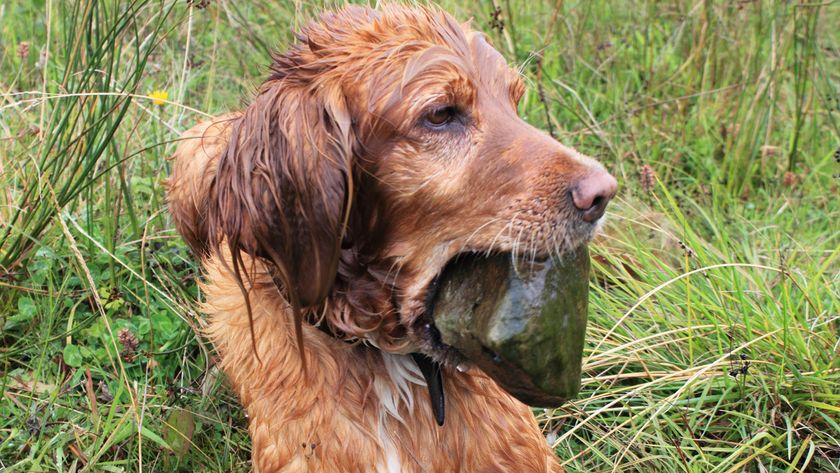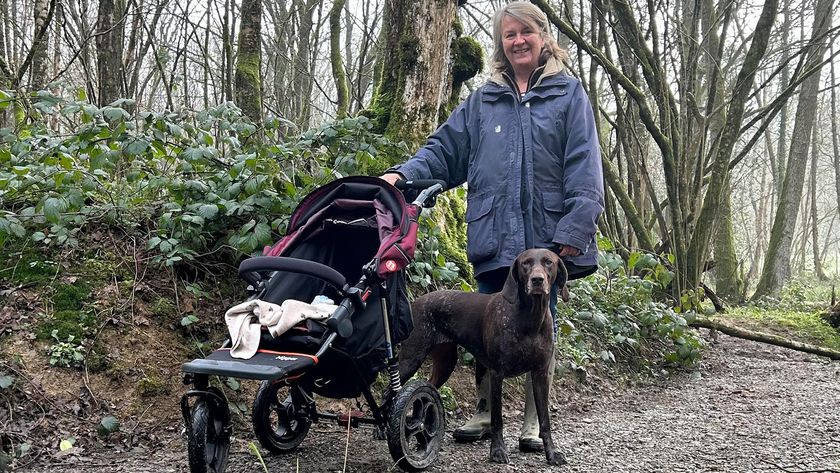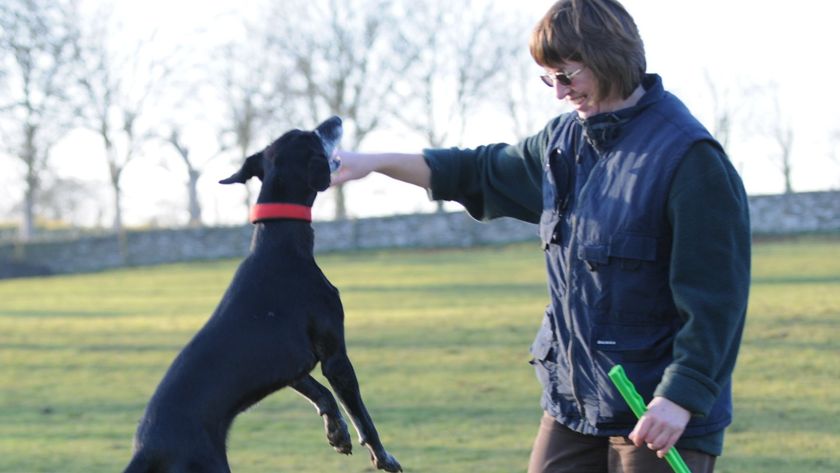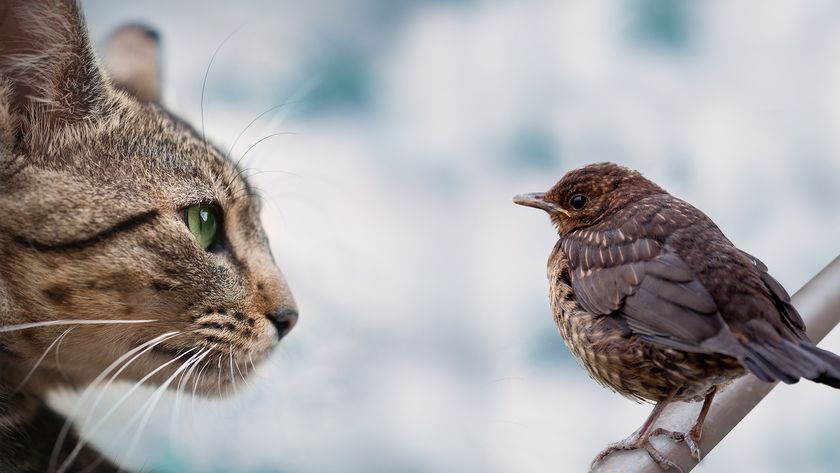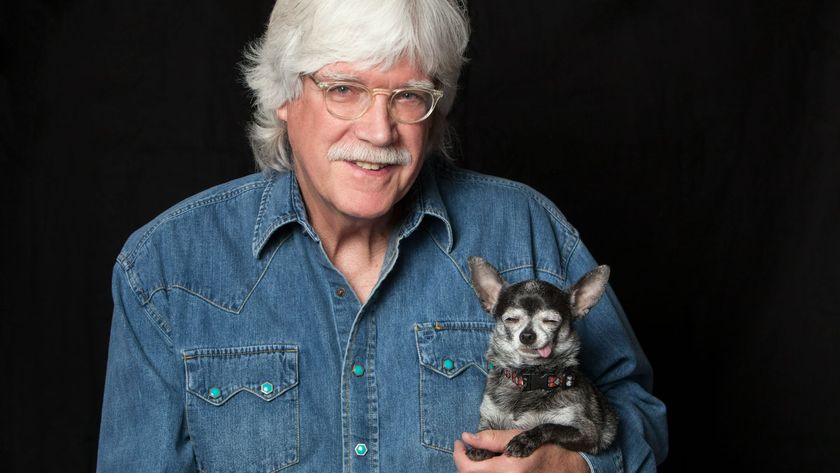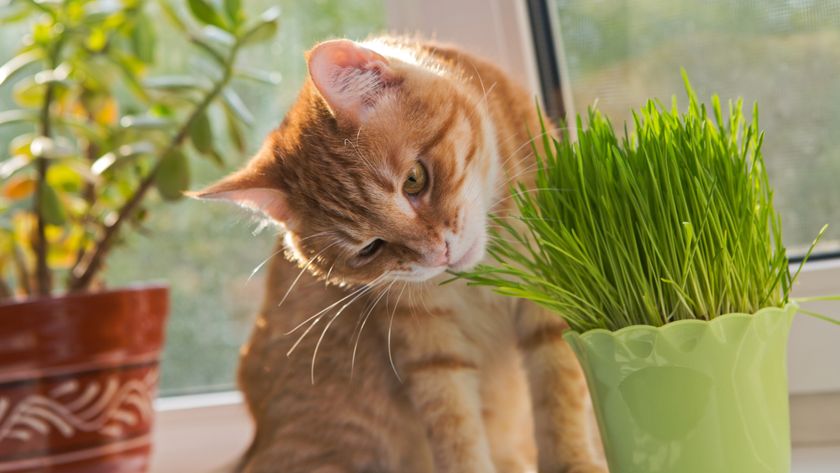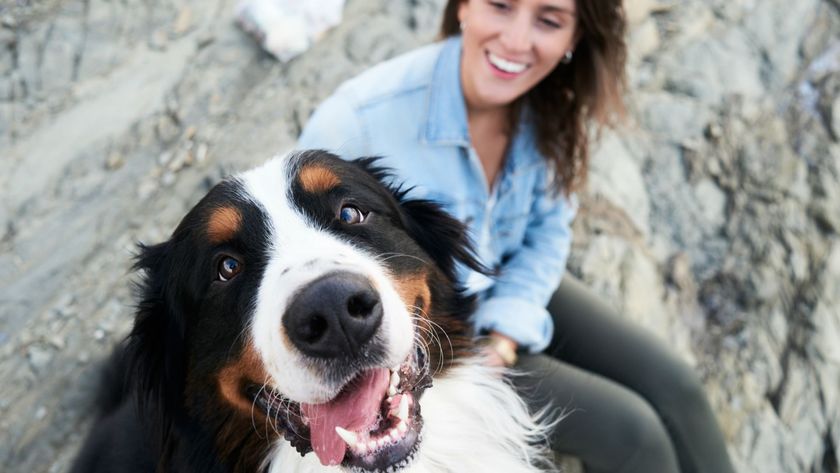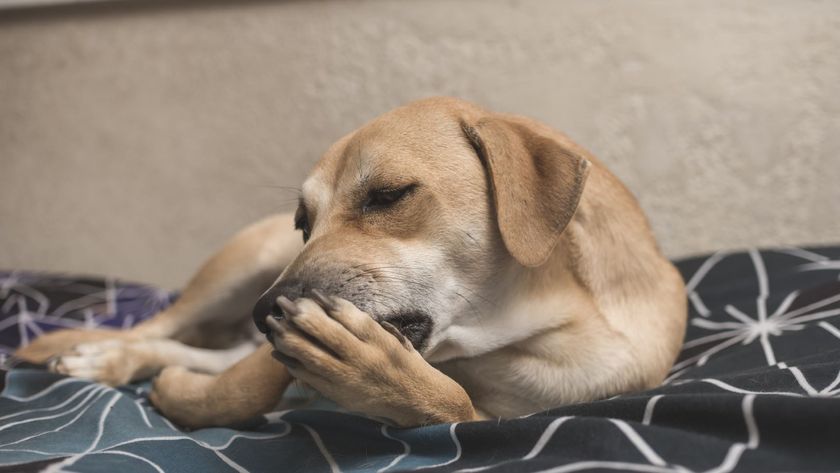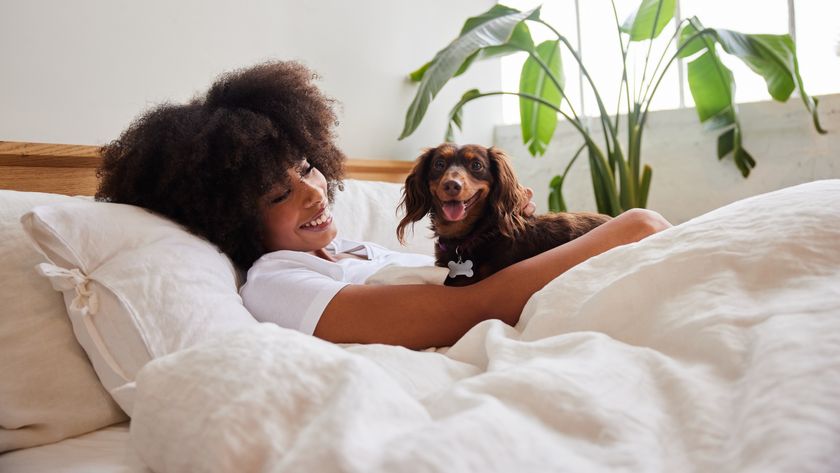How to stop your dog from eating cat food
Is your hungry hound causing problems? Find out how to stop your dog from eating cat food in this guide
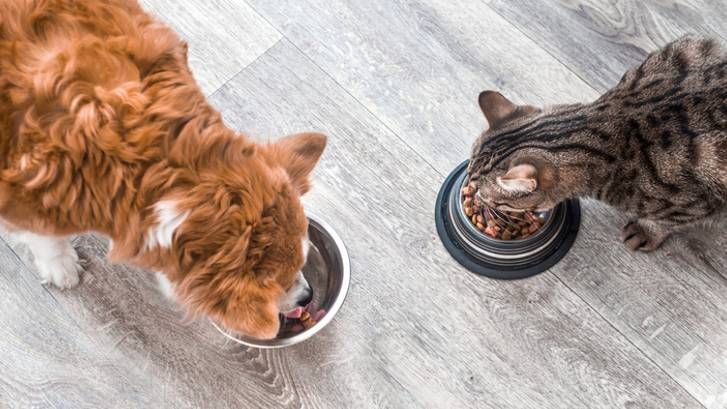
Have you gone into the kitchen and caught your sneaky hound snaffling your feline's food? Yes? Then you are probably wondering how to stop your dog from eating cat food.
If you live in a multi-pet household, it's common for cats and dogs to get up to mischief together, and this can include breaking into places they're not to be! As much as this can seem entertaining, if your dog has eaten something they shouldn't have, you may begin to worry and wonder whether cat food is safe for dogs and what you can do to stop your canine companion chomping on cat food in the first instance.
Fortunately, there are some tried and tested methods to keep your dog away from food that's not designed for them, and we'll explore a few of these below.
Why do dogs eat cat food?
The short answer is that dogs will eat anything - especially something as delicious smelling as protein and fat-filled cat food. Dogs are opportunists and will eat any food source they find in the wild, so that bowl of tasty meat is a strong attractant, and very hard for them to ignore.
Can a dog get ill from eating cat food too often?
Provided it doesn't happen all the time, cat food won't do your dog much harm. However, if it is a regular occurrence, because cat food contains higher amounts of protein, calories and fat than dog food, they run the risk of obesity, gastrointestinal upset, sickness and diarrhea.
Cats are carnivores while dogs are omnivores, so the high protein diet cat food needs to provide will take its toll on your pooch's kidney and liver, and they will run the risk of pancreatitis (caused by having to deal with too much rich food).
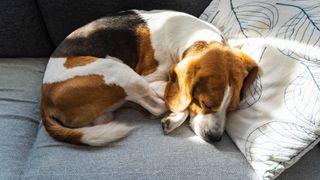
How to stop your dog from eating cat food
If you've invested in the best cat food to keep your kitty hale and hearty, you don't want your pooch pinching it all before they can get at it.
Fortunately, there are ways to keep your pup away from your feline's food stuff: You can put in place ways to completely separate the feeding areas, train them to leave cat food alone, or remove the temptation completely by putting it somewhere they can't get at it. We explain all methods below:
1. Separate their feeding areas
The first step is to ensure that your dog isn't confused that the food is not theirs. It isn't too surprising that they wouldn't know the cat food isn't for them if it is in a bowl similar to their bowl and in the same area. To ensure it's not just a case of mistaken identity, separate the feeding areas and use very distinctly different shaped and colored bowls.
When you first introduce this new set up you could try feeding them at separate times to make the distinction even clearer.
2. Use the 'leave it' command
Training your dog to leave something alone is a very useful bit of training. Strangely, the best way is to teach them do this is to first teach them when to take something.
First, put a treat in your hand, but enclosed in your fist. Let your dog try to get at it, but keep your fist firmly closed as they paw, nose and lick at it. Once they lose interest, give them some praise, then immediately open your hand and offer it to them saying 'take it'. If they go for it, quickly close your fist and wait for them to ignore it again. Once they do, say 'take it' and offer them the treat. Then try with the open hand again.
Next, place the treat on the floor with your hand over it. If your dog ignores it, reward them with a higher value treat. Repeat this for a couple of days until the 'leave it' command is associated in their mind with ignoring food on the floor.
Now, when you put the cat's food on the floor say 'leave it'. Repeat the command if they are showing interest, and if they successfully ignore it, reward them with a treat. Repeat over a number of days.
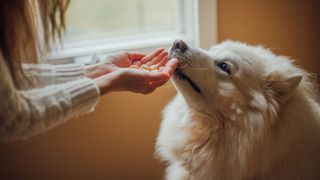
3. Put the cat food out of your dog's reach
If you don't think your dog will readily respond to training, the best way to stop your dog eating the cat's food is to simply not make it possible.
Cat's love climbing so putting their feed on a high shelf or on top of the fridge will mean your kitty will be able to enjoy their food from a high perch, while your dog will only be able to smell it but not reach it.
4. Install a pet gate
Another possibility is to buy a pet gate tall enough to stop your dog getting over it, but with wide enough slats to let your cat slink through the bars. Providing you don't mind fencing off a part of your house this is a pretty much foolproof way of keeping your dog from getting anywhere near your cat's food.
5. Invest in a dog-proof cat feeding station
If your dog constantly has their nose in the cat's bowl, you could invest in a dog-proof cat feeding station like this one from Feline's Only. They have plastic guards which makes it very difficult for your pooch to get to the food, while your cat will have no trouble at all.
6. Door latch
A simple alternative to a pet gate, a door latch and stopper like this one by Door Buddy keeps the dog completely out of the room while your cat is free to come and go as they please. It works by keeping the door open just wide enough to let your moggy pass and is relatively inexpensive and easy to install.
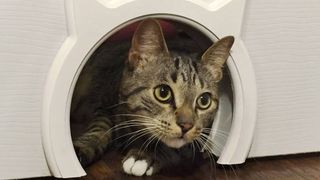
7. Cat door
A stylish way to create an entrance just for your kitty, an interior cat door, also known as a cat portal, is available in a series of cute designs - including cat ears or a miniature door.
It's small enough to restrict your dog from accessing and can be applied in places where your kitty is likely to want their privacy. Many pet owners even create their own cat bedrooms using a spare cupboard in the home using this idea.
PetsRadar Newsletter
Get the best advice, tips and top tech for your beloved Pets
Jamie Middleton is a freelance editor and writer who has been editing and creating content for magazines and websites for over 20 years. As well as writing about the pets he loves, he has helped create websites about tech and innovation like TechRadar.com, Innovate UK and TechSPARK, written programmes for music festivals, books on inventions and architecture, TV listings magazines, and edited publications about cars such as Lexus, Toyota and Jaguar. In his spare time he writes fiction books and poetry - or at least he does when he is permitted to by his cat Pirate, who enjoys the warmth of laptops too much to allow being creative to get in the way.


